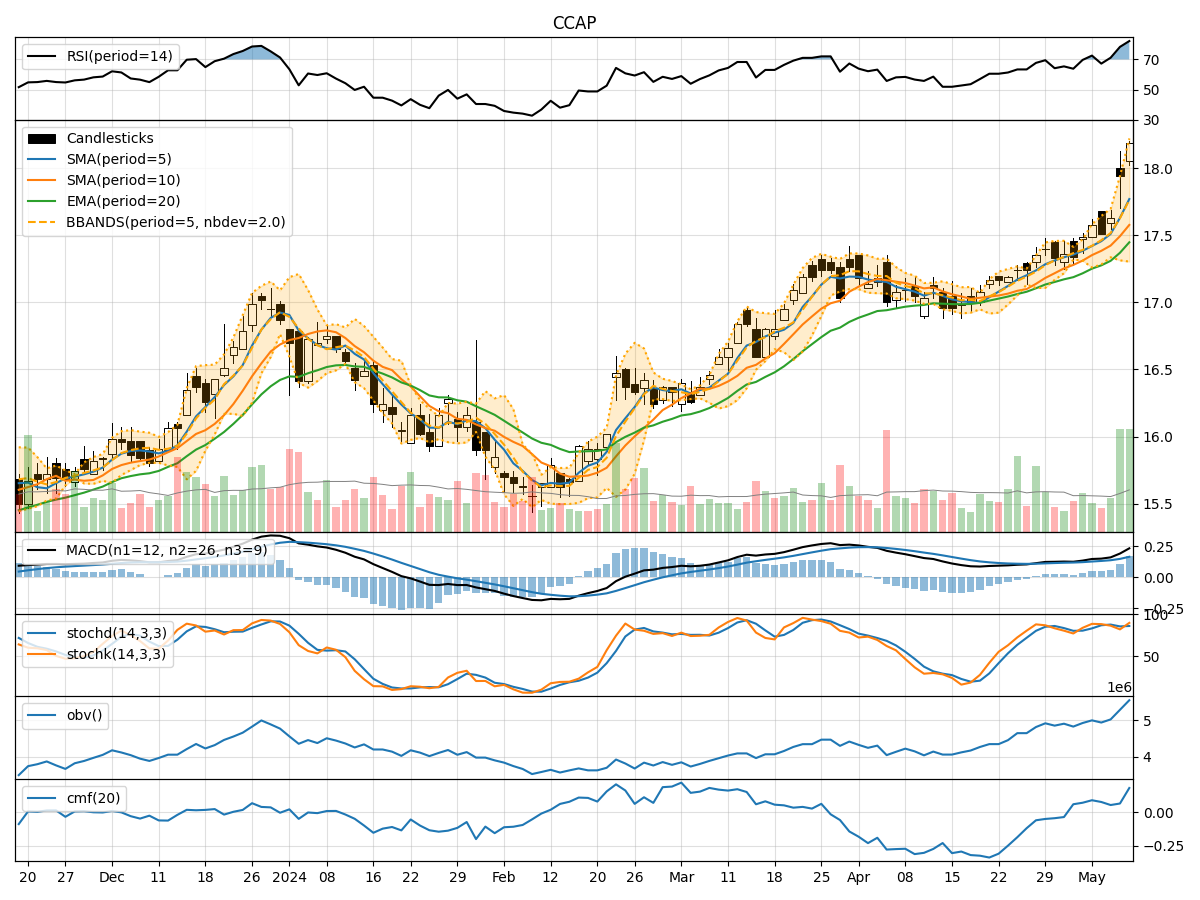
Technical Analysis of CCAP 2024-05-10
Overview:
In analyzing the technical indicators for CCAP over the last 5 days, we will delve into the trend, momentum, volatility, and volume indicators to provide a comprehensive outlook on the possible stock price movement in the coming days. By examining these key indicators, we aim to offer valuable insights and predictions for informed decision-making.
Trend Indicators:
- Moving Averages (MA): The 5-day MA has been consistently above the closing prices, indicating a bullish trend.
- MACD: The MACD line has been trending upwards, with the MACD histogram also showing positive values, suggesting bullish momentum.
Momentum Indicators:
- RSI: The RSI values have been relatively high, indicating overbought conditions in the short term.
- Stochastic Oscillator: Both %K and %D values have been fluctuating in the overbought territory, signaling a potential reversal.
Volatility Indicators:
- Bollinger Bands (BB): The stock price has been trading within the upper Bollinger Band, suggesting an overbought condition.
Volume Indicators:
- On-Balance Volume (OBV): The OBV has been increasing, indicating accumulation by investors.
- Chaikin Money Flow (CMF): The CMF has shown positive values, reflecting buying pressure in the stock.
Key Observations:
- The trend indicators suggest a bullish sentiment in the short term.
- Momentum indicators indicate potential overbought conditions, signaling a possible reversal.
- Volatility indicators point towards an overbought market.
- Volume indicators show accumulation and buying pressure in the stock.
Conclusion:
Based on the analysis of the technical indicators, the stock price of CCAP is likely to experience a short-term correction or consolidation in the coming days. The overbought conditions indicated by the momentum and volatility indicators suggest a potential reversal or sideways movement. Traders should exercise caution and consider taking profits or implementing risk management strategies in anticipation of a possible pullback.